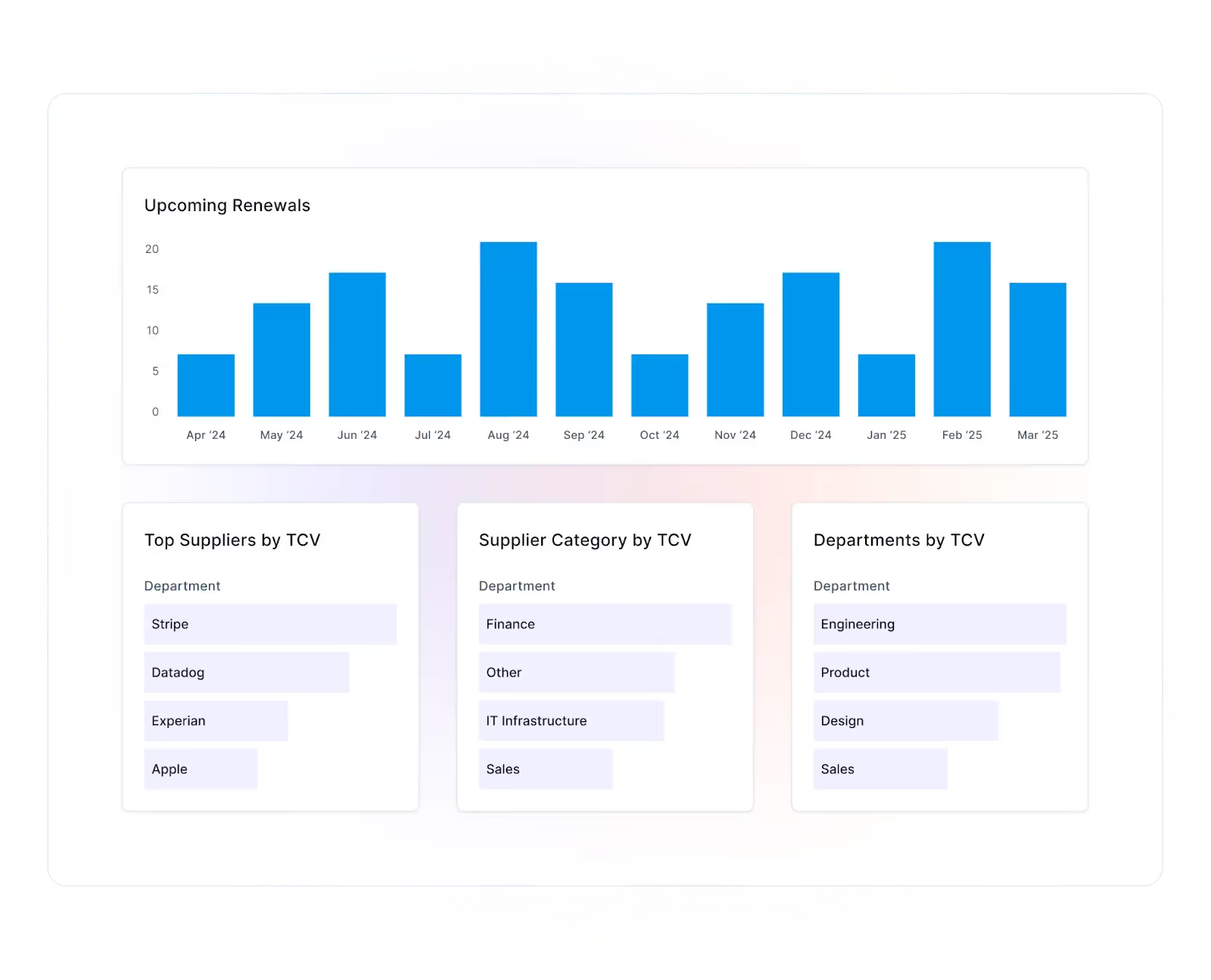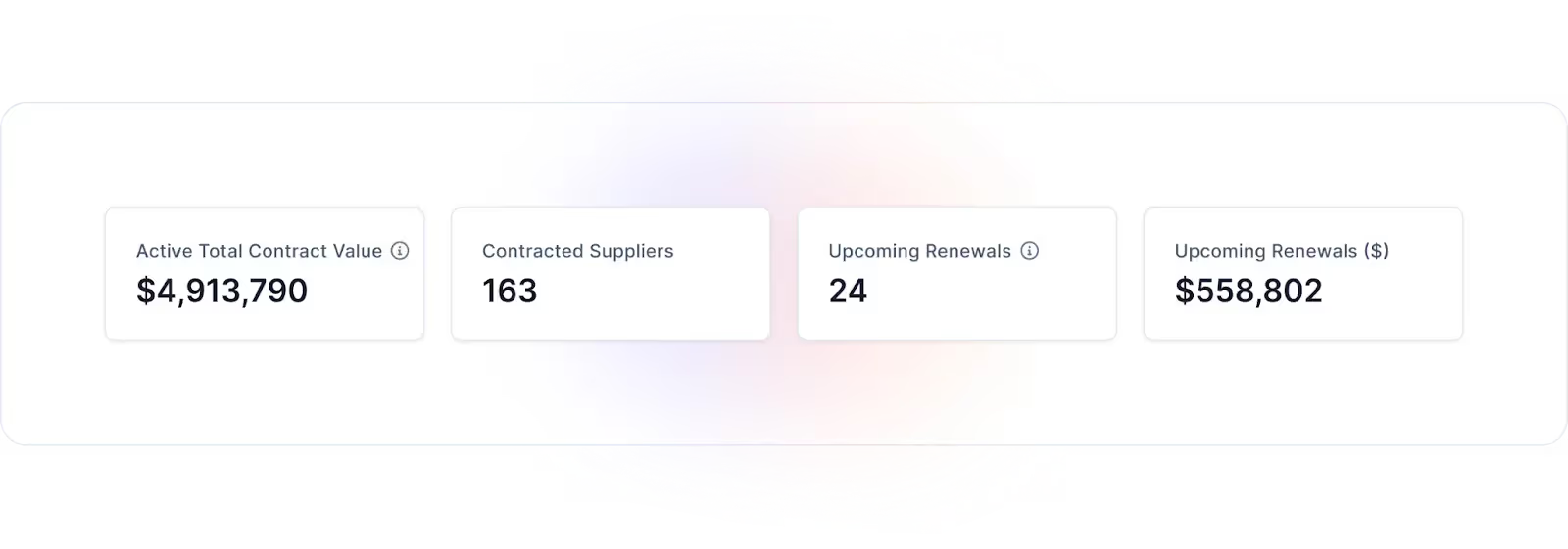Sharing data across organizations can be a hassle. Over 80% of executives believe their companies have data silos, and nearly all of them know it harms their business's efficiency and integrity.
Finance leaders are under immense pressure to drive impact with limited resources. As the demand for faster, more accurate financial reporting increases and CFOs aim to make more strategic decisions, data silos become a significant roadblock.
Leading organizations are shattering data silos with unified reporting, made possible by modern technology. By consolidating data from various sources into a single platform, unified reporting enhances spend visibility and ensures financial integrity. This approach is transforming the finance function, enabling leaders to access real-time insights, improve forecasting accuracy, and make smarter, more data-driven decisions.
Understanding the importance of breaking down these data silos and implementing a unified reporting framework is crucial for finance leaders looking to drive efficiency and elevate their impact.
Why are data silos problematic?
Data silos create significant roadblocks to efficiency and keep resource-strapped finance teams in a never-ending race to chase and reconcile data.
When data is in disparate locations across departments and systems, it becomes challenging to understand the organization's fiscal health holistically. Fragmented data also leads to inaccurate, time-consuming reporting that undermines finance’s ability to confidently identify trends and make critical business decisions.
When data is not easily accessible, it impedes agility and collaboration. Isolated teamwork leads to duplicative effort, inefficient workflows, and countless hours and resources wasted.
Unified reporting addresses these frustrations by breaking down silos, enabling seamless data sharing and collaboration, and providing a single source of truth for finance leaders to ensure more accuracy, efficiency, and insightful strategy to drive organizational success.
Unified reporting: What it is and how it works
Unified reporting is the process of collecting data from various sources across your organization and consolidating it into a single platform. The dream of every CFO is seamless processes and reporting, and unified reporting helps make that dream a reality.
Here's an overview of how it works:
- Data collection: ERPs, cloud applications, HR systems — you name it, a unified reporting system consolidates it.
- Data cleansing and standardization: Data being housed in different areas is one thing. But sometimes, one department’s data doesn’t agree with another’s. To get everyone on the same page, each dataset needs to be cleaned and standardized.
- Advanced analytics and reporting: Once you have a clean, standardized corpus of data, you can start to dig into it. Modern analytics tools, such as Tropic Reports give you enhanced visibility into past, present, and anticipated future performance so you can make improvements and find key data without pulling your teams away from their work. Use the deep insights around active contracts, renewals, and process performance for better fiscal year reporting.

How unified reporting will transform and elevate finance
Think of unified reporting as a bridge connecting the islands of finance and other departments. Here's how it can transform these departments and, ultimately, the entire organization:
Better visibility into SaaS spend
Gathering and reconciling data from different departments manually is painstaking, and unnecessary with modern tools.
Unified reporting centralizes financial and purchasing data, clearly showing your organization's financial health, spending patterns, and supplier performance. Instead of tying out numbers in Excel, analysts can spend their time on more valuable work.
Let’s illustrate this concept in action. Say your organization is negotiating a contract renewal with a key supplier. This process involves manually scanning through emails, spreadsheets, and ERPs to locate relevant data such as historical pricing, contract terms, and past performance metrics.
In a unified reporting framework, this process is infinitely easier. All the data you need is at your fingertips, allowing you to bring the renewal across the finish line with optimal terms in less time.
Smarter, more data-driven decision making
Even though they’re responsible for the whole organization, CFOs tend to only have a high-level understanding of other departments’ spending.
With unified reporting, finance can get a 10,000-foot view of department analytics and still get into the weeds when necessary. Armed with this level of detail, they can identify areas ripe for optimization and improve forecast accuracy. Data insights can also unveil hidden cost savings potential, such as under-utilized licenses or opportunities to negotiate better prices.

This streamlined data not only improves financial decision-making but also helps the organization make better vendor selections and mitigate supplier risks.
Greater efficiency and streamlined workflows
Unified reporting streamlines the approval process. With all relevant data at their fingertips, budget owners can craft more detailed proposals, and reviewers can easily access the information they need to quickly make an informed approval.
Better budgeting and accurate forecasting
Finance teams may not admit it, but much of the time, budgets are set arbitrarily. It’s easy to tack on 3% to whatever a department spent last year and call it a day. However, this approach lacks foresight and can lead to a misallocation of resources.
Finance leaders looking to be truly strategic partners to the business can use unified reporting to create more data-driven budgets that are forward-looking and accurate. Ditch outdated assumptions, and instead craft more realistic budgets by leveraging a blend of historical results and real-time data from across the organization.
How unified reporting benefits the entire organization
Beyond leveling up the finance team’s contribution to the business, leveraging unified reporting will have a ripple effect of massive benefits across the organization.
Cross-department collaboration and innovation
What sets top-performing companies apart? Employees tend to see themselves and their colleagues as part of one team, rather than a collection of different departments.
A survey from Zippia found that “86% of employees in leadership positions blame lack of collaboration as the top reason for workplace failures.” Data silos aren’t just frustrating, they’re detrimental to the success of the business. The effort required to pass data back and forth (and clean it) often means that unless it’s a critical request, the effort isn’t worth it. Unified reporting eliminates this friction, enabling employees to collaborate across departments more frequently and easily.
Here’s a scenario to paint the picture: A marketing campaign generates a surge in sales for a particular product. With unified reporting, this data is instantly available to product teams. By analyzing sales trends and customer feedback, they can identify features driving demand and capitalize on this momentum. This newfound agility allows them to develop innovative product iterations that resonate with the target market.
Enhanced risk management
Data silos create blind spots that make it difficult to identify and mitigate risks. By creating a single source of truth that flows easily throughout the organization, a unified reporting framework makes it easier to spot risks that may be lurking beneath the surface and get ahead of them.
In practice, you can leverage supplier performance data and lead times to quickly develop a plan to mitigate vendor delays and develop proactive contingency plans to minimize potential future disruptions or losses.
Building a culture of transparency and accountability
Anyone who’s worked at a startup knows when things need to get done, job titles and departments become mere formalities. Finance will jump in to help marketing when necessary, and vice versa.
But in larger organizations, the walls between departments tend to thicken. Unified reporting is especially important here, as it establishes a clear standard for accountability and transparency. With a clear view of KPIs across departments, everyone can keep each other accountable and everyone knows their goals are built from the same data.
Harness the power of unified reporting with Tropic
The benefits of unified reporting are manifold, but legacy systems aren’t equipped to handle this type of framework. Tropic is a purpose-built platform that gives finance the tools and data they need to break down data silos, save time, and drive the business forward with accurate insights.

Centralized data collection and integration
No need to worry about different data formats. Tropic seamlessly integrates with your ERP, cloud apps, and other finance and procurement systems. Manual data entry and reconciliations are a thing of the past.
Automated data cleansing and standardization
Data cleansing is a chore for finance and procurement teams. Tropic’s robust data management tools take care of this tedious task, automatically cleaning and standardizing data from disparate sources. Along with saving time, this ensures data accuracy and consistency by establishing a single source of truth.
Advanced analytics and reporting
Tropic can do more than just clean and consolidate your data. Our powerful analytics engine allows you to categorize data however you like. Maybe you’re looking to identify a new supplier in a particular region, or drill down into what’s driving a cost increase—whatever your use case, our tools can help you find the insights you’re looking for.
Streamlined collaboration tools
Neither teams nor data should be siloed in an organization. Tropic’s built-in collaboration tools make it easier for your teams to work together. Keep everyone on the same page by sharing reports, insights, and feedback within a centralized platform.
Granular insights enable more accurate budgeting
Legacy systems often rely on macro-level data for budgeting, leading to assumptions that might be directionally correct but miss the mark at the supplier level.
Tropic’s centralized procurement data enables in-depth analysis, allowing you to dig into the details during budgeting season. This may include optimizing license utilization, predicting cost fluctuations, uncovering potential savings through benchmarking exercises, or anticipating supplier price changes.
Move beyond arbitrary budgets and build forecasts grounded in real-time data and actionable insights. See how Tropic can help your finance and procurement teams work together seamlessly and unlock the full potential of your data.
Related blogs
Discover why hundreds of companies choose Tropic to gain visibility and control of their spend.








